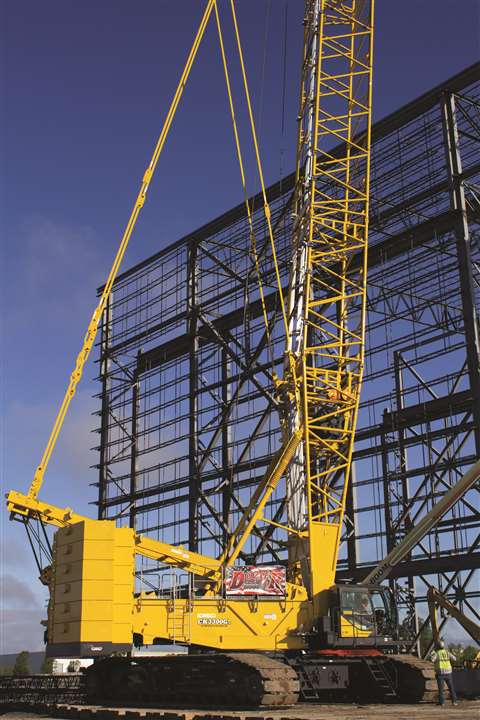What are the biggest issues in equipment financing?
02 November 2022
American Cranes & Transport checks in with the construction equipment finance sector a couple of times a year to apprise readers of any changes that could affect the market for cranes and transport equipment. Over the past couple of years, the discussions about equipment financing mainly centered on the impact of the Covid-19 pandemic. Generally speaking, the biggest issues were inflation, supply chain challenges and rising prices, for both new and used cranes and related equipment.
But today, the discussion has a new topic – rising interest rates.
“Borrowers have been accustomed to borrowing just under 4 percent to mid-5 percent for a very long time,” said Cheryl Fry, vice president, Harry Fry and Associates. “Any increase causes them concern.”
 Until mid-2022, generally speaking, the biggest issues in the equipment finance realm were inflation, supply chain challenges and rising prices, for both new and used cranes.
Until mid-2022, generally speaking, the biggest issues in the equipment finance realm were inflation, supply chain challenges and rising prices, for both new and used cranes.
She said rising rates may cause some buyers to pause or be put on hold.
First Financial Equipment Leasing’s (a JA Mitsui Leasing company), Jeffrey Whitcomb said the two biggest challenges in the market right now are rising interest rates and lack of supply.
“As the trend in rates has been solidly upwards all year, clients have tried to identify cranes for their fleet (new or used) and lock down financing as early as possible,” Whitcomb said.
Both seasoned finance executives in the crane sector, Fry and Whitcomb reveal important information about buying equipment in today’s environment.
Have interest rate hikes affected new and used crane financing? If so, how?
FRY: Most definitely. The Federal Reserve has steadily raised interest rates throughout 2022. Beginning in March 2022 with a .25 percent rate increase, the Fed has raised rates five times this year. Borrowers have been accustomed to borrowing just under 4 percent to mid-5 percent for a very long time. Any increase causes them concern. The good part is the rates are still much lower than from the 1990s and early 2000s, which ran between 9.5 percent to 11 percent
The Federal Reserve’s tool to battle inflation is to raise rates but has impacted the new and used cranes market in many ways. First, and foremost the cost of borrowing has escalated to rates we haven’t seen in many years. Additionally, by the Fed raising rates it has caused the dollar to strengthen among international currencies and in effect causes equipment prices to be adjusted upward.
Overall, the continued rate hikes cause some buyers to pause in order to determine what the future may hold for their businesses and market opportunities. We have seen some customer’s purchases placed on hold and take a ‘wait and see’ attitude.
WHITCOMB: Yes. There are two challenges right now – rising rates and lack of supply. As the trend in rates has been solidly upwards all year, clients have tried to identify cranes for their fleet (new or used) and lock down financing as early as possible. Rate locks have been a useful tool when clients have a specific delivery date that they can count on.
What are the biggest challenges to financing cranes and related equipment in a higher interest rate environment?
 Cheryl Fry, Harry Fry and Associates
Cheryl Fry, Harry Fry and Associates
FRY: As the rates increase, along with the prices of new and used equipment, companies still need to acquire equipment to keep up with demand or grow their business. With the increases, companies will look for lower cost equipment such as used cranes from dealers, private party and auctions. Some of the challenges to financing in the used crane market can be getting aggressive terms for older equipment that have seen increases as well, establishing that the collateral is free and clear of any liens and having the ability to commit to the purchase quickly, so the buyer does not lose out on the equipment.
Due to interest rate volatility, banks are not holding rates as long as they used to. Many approvals now not only have a credit approval expiration date, but also a rate expiration date. Due to this, customers are weighing whether to close a deal earlier than they typically would since the rate may be lower, but the equipment may not be ready, or wait and run the risk of a higher rate.
WHITCOMB: So far, clients have been reporting back to me that they have been able to pass along their increased costs to the project they are working on. Probably the biggest challenge is simply communication. With rates rising so rapidly and the term premiums attached to different lengths of loans or leases changing as well, it makes it that much more important to get quotes in writing and to be sure to look at the indexing language in the quote so there won’t be any surprises when the equipment arrives, and the rate has changed.
Do you think interest rate hikes will cool crane-related transactions or change the nature of the market?
FRY: Yes and no. As I mentioned previously, any increase in rate or cost of equipment may cause some buyers to step back and take a wait and see attitude. Other buyers that are still experiencing good activity and growth in their businesses will realize that they need the equipment to continue to service their market. Having the equipment, even at a bit of a higher cost, will enable the company to grow rather than stay stagnant.
 Jeffrey Whitcomb, First Financial Equipment Leasing
Jeffrey Whitcomb, First Financial Equipment Leasing
WHITCOMB: I do. Interest rates have risen so much that it makes the cost of financing debt for M&A that much higher and that will raise the cost of equity capital as well. If you cannot grow by acquiring smaller companies, you will have to grow by adding more equipment and these higher rates will make that more expensive across the board. That is the change that I see coming.
Higher rates have traditionally always led to an increase in the use of lease financing with residual values placed on the equipment. The construction equipment market is the #1 rated market by the Equipment Leasing & Finance Association in terms of the likelihood of asset value increases. This means higher and higher residual values and that can drive lower and lower monthly payments. Leasing makes a ton of sense in that context.
And finally, is there anything about crane and related equipment financing that you would like to impart to our readers?
FRY: Yes, although rates are rising, these rates are still very low. We have all been so used to rates being extremely low for a very long time that any rise gets our attention. This is especially true for those businesses that may have commenced operations in the past 10 years. After the 2008 downturn, rates have been extremely low and business owners have been fortunate to be able to borrow at a very low cost of funds. However, average borrowing rates were in the 7 to 9 percent range over much of the last 30 years. Prime rate in the mid-90s was in the 8.50 to 8.75 percent range. Prime rate today is 6.25 percent. As with everything over the past few years – this is our new ‘normal.’
WHITCOMB: Yes. Flexibility. If I was advising a friend about this market I would tell them to create a fast and flexible capital structure that will allow them to adapt to dynamic market conditions. I cannot recall a time period during my three decades in the industry where there was so much uncertainty around the world. I would want my fleet to be dynamic in the sense that I would always have the opportunity to upsize or downsize each year. I’d be using various lease terms and loan terms to create that structure where I have an opportunity to buy or sell each year. Growth can be very regional as well so I would be reaching out to others in the same situation and ‘making deals’ to do re-rentals or some other form of ‘flexing’ my fleet when the conditions call for it.
STAY CONNECTED


Receive the information you need when you need it through our world-leading magazines, newsletters and daily briefings.




